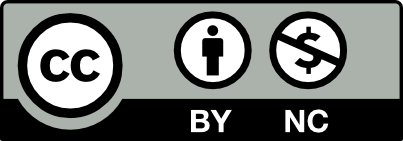
SpringBoot : Learn By Example
SpringBoot : Learn By Example
A fast paced guide to learn SpringBoot
About the Book
The SpringBoot : Lean by Example book will help you to understand what is SpringBoot, how SpringBoot helps you to build Spring based applications quickly and easily and the inner workings of SpringBoot using easy to follow examples.
By the end of the book, you will have a practical experience on:
- What is SpringBoot?
- How SpringBoot increases developer productivity?
- How SpringBoot AutoConfiguration works behind the scenes?
- Working with Databases using JdbcTemplate, MyBatis, JOOQ, Spring Data JPA
- Working with MongoDB NoSQL database
- Developing web applications using SpringBoot and Thymeleaf
- Developing REST API using SpringBoot and Consuming from AngularJS Application
- Securing web applications using SpringBoot and SpringSecurity
- Monitoring SpringBoot applications with SpringBoot Actuator
- Testing SpringBoot applications
Table of Contents
-
About This Book
- Who this book is for
- What this book covers
- What you need to use this book
- Source Code
- About Author
- Book Revision History
-
Chapter 1: Introduction to SpringBoot
- 1.1. Overview of Spring framework
- 1.2. Developing Web Application using SpringMVC and JPA
- 1.3. A Quick Taste of SpringBoot
- 1.4. Summary
-
Chapter 2: Getting Started with SpringBoot
- 2.1. What is SpringBoot?
- 2.2. Our First SpringBoot Application
- 2.3. Summary
-
Chapter 3: SpringBoot Behind the scenes
- 3.1. Exploring the power of @Conditional
- 3.2. How SpringBoot AutoConfiguration Works?
- 3.3. Summary
-
Chapter 4: Creating Custom SpringBoot Starter
- 4.1. Create Parent Module spring-boot-starter-twitter4j
- 4.2. Create twitter4j-spring-boot-autoconfigure module
- 4.3. Create twitter4j-spring-boot-starter module
- 4.4. Create twitter4j-spring-boot-sample sample application
- 4.5. Summary
-
Chapter 5: SpringBoot Essentials
- 5.1. Logging
- 5.2. Externalizing Configuration Properties
- 5.3. Developer Tools
- 5.4. Summary
-
Chapter 6: Working with JdbcTemplate
- 6.1. Using JdbcTemplate without SpringBoot
- 6.2. Using JdbcTemplate with SpringBoot
- 6.3. Initializing Database
- 6.4. How to use other Connection Pooling libraries?
- 6.5. Summary
-
Chapter 7: Working with MyBatis
- 7.1. Using SpringBoot MyBatis Starter
- 7.2. Summary
-
Chapter 8: Working with JOOQ
- 8.1. Using SpringBoot JOOQ Starter
- 8.2. Summary
-
Chapter 9: Working with JPA
- 9.1. Introducing Spring Data JPA
- 9.2. Using Spring Data JPA with SpringBoot
- 9.3. Working with Multiple Databases
- 9.4. Summary
-
Chapter 10: Working with MongoDB
- 10.1. Introducing MongoDB
- 10.2. Getting Started with MongoDB using Mongo Shell
- 10.3. Talking to MongoDB using Spring Data Mongo
- 10.4. Summary
-
Chapter 11: Web Applications with SpringBoot
- 11.1. Developing Web Application using SpringBoot
- 11.2. Using Tomcat, Jetty, Undertow Embedded Servlet Containers
- 11.3. Customizing SpringMVC configuration
- 11.4. SpringBoot web application as deployable war
- 11.5. SpringBoot Supporting View Templates
- 11.6. Working with Thymeleaf Forms
- 11.7. Data Validation
- 11.8. File Uploading
- 11.9. Using ResourceBundles for Internationalization (I18N)
- 11.10. Summary
-
Chapter 12: Building REST API using SpringBoot
- 12.1. Introduction to RESTful WebServices
- 12.2. REST API using SpringMVC
- 12.3. REST API using Spring Data REST
- 12.4. Consuming REST API from AngularJS
- 12.5. Summary
-
Chapter 13: Securing Web Applications using SpringBoot
- 13.1. Spring Security in SpringBoot Web Application
- 13.2. Method Level Security
- 13.3. Securing REST API using SpringSecurity
- 13.4. Summary
-
Chapter 14: SpringBoot Actuator
- 14.1. Exploring Actuator Endpoints
- 14.2. Customizing Actuator Endpoints
- 14.3. Securing Actuator Endpoints
- 14.4. CORS support for Actuator Endpoints
- 14.5. Monitoring and management over JMX
- 14.6. Monitoring and management using a remote shell
- 14.7. Summary
-
Chapter 15: Testing SpringBoot Applications
- 15.1. Testing Support in SpringBoot
- 15.2. Testing RESTful Services using RestTemplate
- 15.3. Testing Secured Controller/Service Methods
- 15.4. Testing with Mockito
- 15.5. Summary
-
Chapter 16: Deploying SpringBoot Applications
- 16.1. Running SpringBoot applications in production mode
- 16.2. Deploying SpringBoot application on Heroku
- 16.3. Running SpringBoot application on Docker
- 16.4. Summary
- Appendix A : Resources
The Leanpub 60 Day 100% Happiness Guarantee
Within 60 days of purchase you can get a 100% refund on any Leanpub purchase, in two clicks.
Now, this is technically risky for us, since you'll have the book or course files either way. But we're so confident in our products and services, and in our authors and readers, that we're happy to offer a full money back guarantee for everything we sell.
You can only find out how good something is by trying it, and because of our 100% money back guarantee there's literally no risk to do so!
So, there's no reason not to click the Add to Cart button, is there?
See full terms...
80% Royalties. Earn $16 on a $20 book.
We pay 80% royalties. That's not a typo: you earn $16 on a $20 sale. If we sell 5000 non-refunded copies of your book or course for $20, you'll earn $80,000.
(Yes, some authors have already earned much more than that on Leanpub.)
In fact, authors have earnedover $13 millionwriting, publishing and selling on Leanpub.
Learn more about writing on Leanpub
Free Updates. DRM Free.
If you buy a Leanpub book, you get free updates for as long as the author updates the book! Many authors use Leanpub to publish their books in-progress, while they are writing them. All readers get free updates, regardless of when they bought the book or how much they paid (including free).
Most Leanpub books are available in PDF (for computers) and EPUB (for phones, tablets and Kindle). The formats that a book includes are shown at the top right corner of this page.
Finally, Leanpub books don't have any DRM copy-protection nonsense, so you can easily read them on any supported device.
Learn more about Leanpub's ebook formats and where to read them
